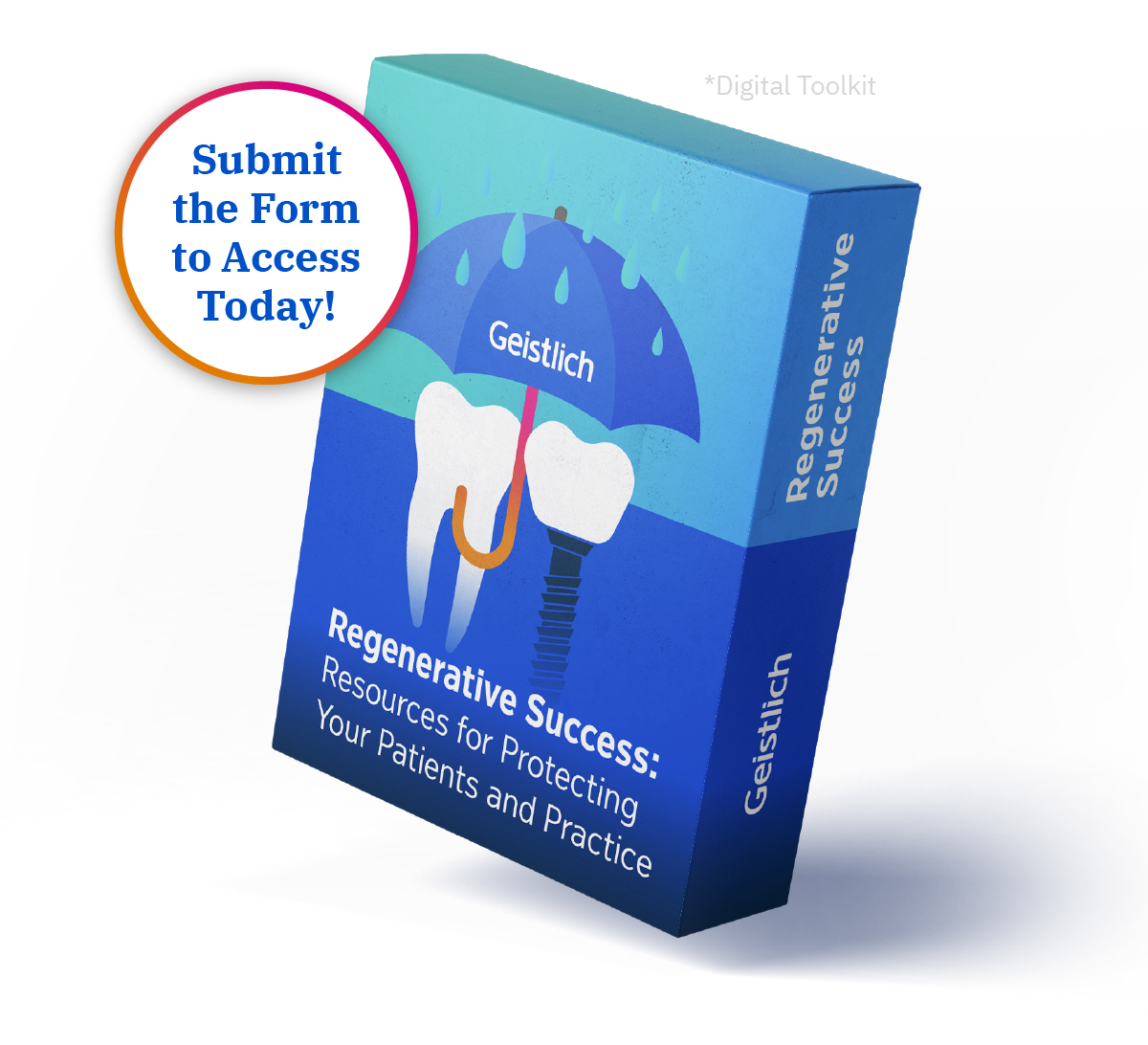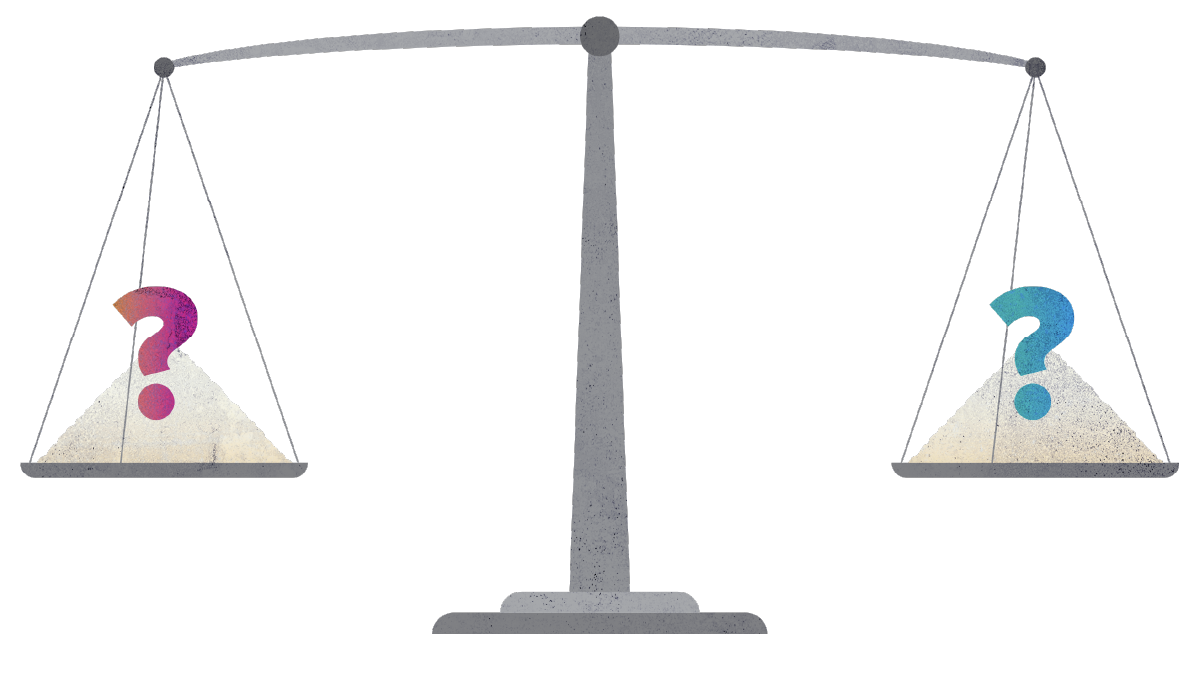
Protect your investment with a solid foundation

Bone regeneration is complicated and risk comes with everyday procedures.
In the pursuit of success, making the right choices is crucial. Whether it’s selecting the right tools, products, or even people, these decisions can significantly impact our journey towards the best clinical outcomes.
How can you achieve predictability that protect your patient, reputation, and even your business?

See how you can
Protect Your Investment
Access the Toolkit:
Regenerative Success: Resources for Protecting Your Patients and Practice


Does it Matter
which bone substitute
you choose?
How does your bone substitute stack up?
Because not all bone substitutes and manufacturers are created equal, there are several characteristics to consider that can lead to successful graft outcomes. How does your current bone substitute compare? Below are key characteristics to consider and why they are important:
Xenograft
Selecting the right xenograft with specific features is crucial for a successful outcome. What to consider:
Geistlich Bone
Substitute Portfolio
Your Current
Bone Substitute
Resorption Rate & Volume Stability
Once the tooth is gone, the alveolar bone resorbs over time. If the bony defect is augmented with a slow resorption bone substitute material, the volume of the augmented area will be preserved over the long-term yielding to stable functional and esthetic results.
The slow resorption of Geistlich Bio-Oss® and the ideally matched protective function of Geistlich Bio-Gide® promote the long-term volume stability1 of the augmentation material and ensure high implant survival rates.2
Processing Technique & Pore Structure
Processing is a critical factor to consider when choosing a bone substitutes manufacturer because it directly affects the quality, safety, and effectiveness of bone substitute products.
Geistlich Bio-Oss® undergoes a patented processing technique to preserve the natural integrity of the graft.
- Geistlich Bio-Oss Key Processing Steps:
- Cleaning
- Cutting
- Deproteinization
- Drying
This patented process leads to a unique interconnecting pore system, which is highly similar to human bone, an ideal environment for forming new bone.3
Handling Needs
For precision, ease of use, and adaptability, variation of handling properties is essential.
Geistlich offers a wide variety of handling needs from granules, to Geistlich Bio-Oss Collagen® to Geistlich Bio-Oss Pen®. Geistlich Bio-Oss Pen® enables you to access hard to reach areas of the mouth, while not compromising on ergonomics. Geistlich Bio-Oss Collagen® provides easy to hydrate and to position right in the defect area.
Allografts
When selecting an allograft, it is essential to consider various characteristics to ensure the best possible outcomes. What to consider:
Geistlich Bone
Substitute Portfolio
Your Current Bone
Substitute
Processing Matters
Processing is a critical factor to consider when choosing an allograft because it directly affects the quality, safety, and effectiveness of the tissue.
vallos® undergoes a unique patented processing technique to preserve the integrity of the graft.
- vallos® MTF Difference:
- Stringent Donor Selection — Less than 2% of all donated tissue is accepted.4
- Rigorous Testing — MTF is the only tissue bank to use The Vanguard Method® that exceeds industry standards.
- 100% Aseptic Processing — Preserves inherent biologic and structural properties. Leads to an unmatched tissue integrity and is naturally biocompatible with recipient.
Leads to the most natural tissue and exceptional biocompatibility with the recipient.
Variety of Configurations for the Right Indication
Flexibility within the portfolio to meet all your patient and surgical needs with the convenience of a single source provider.
By the numbers, Geistlich offers 35 allograft variations. vallos® consists of 9 configurations (four demineralized and five mineralized forms) in various cortical | cortico-cancellous | cancellous formulations.
Handling Needs
For precision, ease of use, and adaptability, variation of handling properties is essential.
Looking for handling? vallos®f demineralized Interwoven three dimensional fibers retain a putty like consistency that is packable and conforms to the shape of the defect.
Verified Osteoinductivity
Osteoinductivity of allografts can be impacted by both processing and sterilization methods, such as gamma irradiation which has been well documented to reduce the osteoinductive potential up to 50%.4 It is important that the osteoinductive potential is assessed post processing to ensure that it’s representative of the final product.5
Each and every lot of vallos® demineralized is tested for osteoinductivity potential, including BMP-2 post processing.
Manufacturer
The choice of manufacturer is an important consideration when selecting bone substitute because it directly impacts the quality, support, and reliability.
Geistlich Bone
Substitute Portfolio
Your Current Bone
Substitute
Manufacturing Ownership
Where is the bone substitute sourced?
Geistlich controls and manufactures Geistlich Bio-Oss® from the beginning to end. All vallos® allografts come from our single source provider, MTF, to ensure consistent product quality.
Long Term Clinical Evidence
Evaluating the success of a treatment is a function of time, so analyzing the companies’ long-term clinical evidence is critical in understanding the effectiveness of the bone substitutes.
Geistlich has led the guided bone regeneration world for more than 35 years, with 24+ years of independent clinical follow up.6
MTF brings 35+ years experience, 150,000+ tissue donors processed, and 10M grafts provided.
Peer-Reviewed Literature
Worldwide Independent research groups proving safety and efficacy of products and treatments.
Geistlich has more than 1,400 published peer-reviewed literature.
Cost-Benefit Analysis:
Analyze the cost-effectiveness of the bone substitute, taking into account the initial cost, potential complications, and the long-term benefits it offers compared to other treatment options.
Learning Opportunities and Resources
The ability to touch and feel the products, enhance your skills, and expertise to provide the assurance and continuous learning.
Key users
Key users can share data and insights about patient outcomes associated with various bone substitute products. This information is valuable in assessing the long-term effectiveness of different materials.
- Mordenfeld A et al.: Clin Oral Implants Res 2010; 21 (9), 961-70.
- Jung RE et al.: Clin Oral Implants Res 2013; 24 (10), 1065-73.
- Berglundh, T. et al. (1997). Clin Oral Implants Res. 8(2): 117–124.
- Data on file, MTF Biologics
- Gertzman AA, Sunwoo M, Raushi D, Dunn M. The Effect of Cold Gamma Radiation Sterilization on the Properties of Demineralised Bone Matrix. In: Kennedy JF, Philips GO, Williams PA, editors. Sterilization of tissues using ionising radiations: CRC Press; 2005. p 151-156.
- Jung R, et al., Clin Oral Implants Res 2021 Dec; 32(12):1455-1465.
The use of Geistlich Bio-Oss® resulted in significantly lower number of implant losses, compared to autogenous bone particles and other bone-graft materials.1
- Knöfler W, et al. Int J Implant Dent. 2016 Dec;2(1):25







